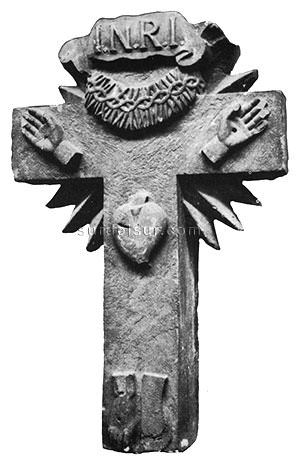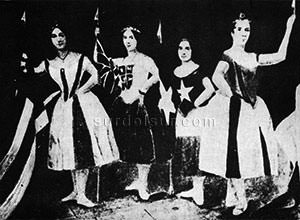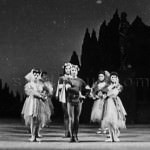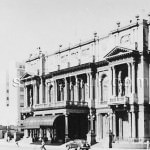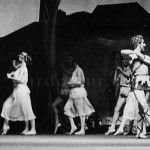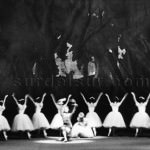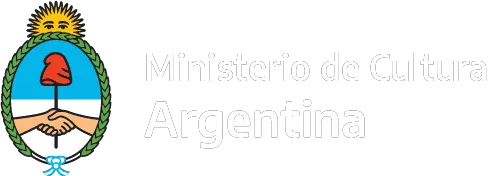The History of Ballet in Argentina, is the history of dance representation, essential form of the art of ballet, from the seventeenth century. The origins must date back from the times of Spanish domination and, more precisely, of the settlement of the Missions by the Fathers of the Society of Jesus. Later the dance received the Spanish, Italian and Russian influence, until arriving at the creation of the School of Argentine Ballet of the Teatro Colón.
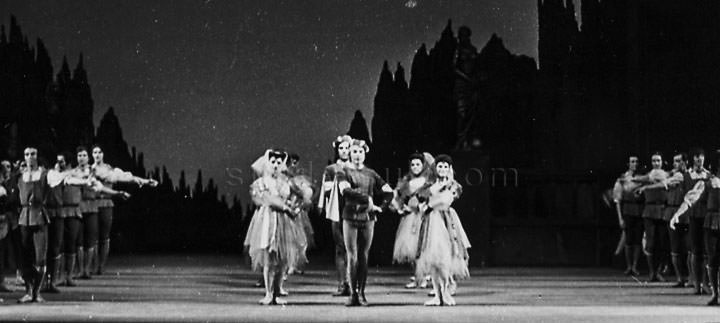
Article of the guest columnist for surdelsur.com
Origin of classical dance in Argentina (1600-1850)
The jesuits
History of Ballet in Argentina began when in 1607, the Jesuitical Province of Paraguay was created, comprising, among other territories, present-day Argentina. The period from that date till 1767, the year when the priests were expelled, witnessed character performances which were generally religious and evangelizing, where a harmonious combination of prose theater, music, dance and staging elements served both a didactic and an artistic purpose clearly associated with the general guidelines set by the missionaries.
Escuela Bolera or Spanish Classical School
On the other hand, Spanish dance became a usual practice in our land. In the history of Ballet in Argentina, Escuela Bolera or Spanish Classical School was a regular and habitual presence which developed till the early 19th century. Not only dancers but also comedians themselves took part in these performances in the context of theatrical shows.
In the first quarter of the 19th century, the first figures with a professional and academic background appeared: Toussaint, Los Cañete and Los Catón divertissements.
European influence (1850 – 1925)
Influence of French companies
In the history of ballet in Argentina, the French influence stands out. In 1867, the first choreographic performances with integral ballets were offered.
In the earlier Colón Theater the Rousset Company made its debut, staging the major romantic ballets: Giselle, La Sylphide, Catarina and others, together with pieces from the Escuela Bolera.
Character dances, duets and including mime-drama – as the ones practiced by the Catón with their Napoleonic ballets- filled our theaters.
In 1860 and 1861, the Thierry Company with Celestina y Oscar Bernardelli became the most important group which had visited Buenos Aires until then. Almea, La Sylphide, Esmeralda and many others composed the repertoire which was performed by Italian Virginia Ferrari and Celestino De Martino. This company enjoyed a great success.
Italian Company’s arrived
A similar influence had the Italian Ballet in the history of ballet in Argentina. The triumph would crown, in 1883, the Italian Choreographic Company which staged the famous Luigi Manzotti’s Excelsior, under the choreographic direction of Raffaelle Grassi and with the much admired Emma Bessone, a dancer with a great renown in Italy and Russia. Hippolyte Montplaisir’s Brahma and Luigi Danessi’s Messalina were known by the public in the next years, confirming the extraordinary success and popularity of ballo grande and the great Italian artists.
In 1903, Ludovico Saracco’s Company offered the local premiere of Delibes’s Coppelia with Ida Ronzio; the series of Italian choreographers and dancers kept on at the new Colón Theater (inaugurated in 1908). The choreographers Augusto Francioli, Salvatore Cammarano, Ettore Coppini, Natalio Vitulli and dancers like Ettorina Mazzucchelli, Cia Fornaroli, Placida Battaggi and Virginia Zucchi took part in the baillabili of operas and, in 1916, in the re-run of Excelsior, staged by Augusto Francioli
Balletes Russes
Of course, we cannot fail to highlight the prominence of Russian ballet in the history of ballet in Argentina. In 1913 y 1917, there appeared Diaghilev’s Ballets Russes with Vaslav Nijinsky, Tamara Karsávina Adolph Bolm, Lydia Lopukhova, Lubov Tchernicheva, Enrico Cecchetti etc. Argentina knew then the aesthetics of modern ballet with Michel Fokin, Nijinsky’s The Faun and Leonid Massine’s first ballets, which became a remarkable experience for the cultural elite.
Anna Pavlova’s troupe (1917, 18, 19 y 28) and Isadora Duncan (1916) also worked in Buenos Aires.
Argentine Ballet Schools
An outstanding event in the history of ballet in Argentina was when, towards 1922, the training activities of the schools of the Colón Theater started (although in 1918 a little group of Argentine dancers trained by master Natalio Vitulli had performed in the Theater). The teachings of Pierre Michailowsky, Maria Olenewa, Slava N. Jakovleff, Ekaterina Galanta and other artists shaped the national artists who, in 1925, would perform in the first show of the Ballet Company of Colón Theater: The Golden Rooster, by Nikolai Rimsky-Korsakov directed by Adolf Bolm
During its first ten or fifteen years, the Ballet Company, the oldest academic group in South America, was identified with Diaghilev’s artists: Nijinska Romanov, Olga Smirnova, Felia Dubrovska, Wiltzac, Ludmilla Schollar, Michel Fokin, Olga Spessiva and Serge Lifar(1934).
The first Argentine prima ballerinas were: Dora del Grande, Leticia de la Vega and Blanca Zirmaya; then there would be María Ruanova with a brilliant international record, and Lide Martinoli trained in the Scala of Milano.
Margarita Wallmann was named the choreographic director of the Ballet from the late 1930s until the 1940s. Formed at Mary Wigmann’s school, Wallmann developed the ballet of the great show, with the particularly notable oratory by Arthur Honegger Joan of Arc at the Stake.
See next report The Ballet in Argentina from 1940 >>, who influenced his training. Large national and foreign figures who formed the Ballet of the Teatro Colon.
References:
All graphic material in this report is edited digitally. The customized version by surdelsur.com shown on this page is performed based on the following documents:
- Teatro Colón, Opera House [Photographs and ancient prints] Collection of Photographs of History of Ballet in Argentina, kindly granted by Colon Theater

